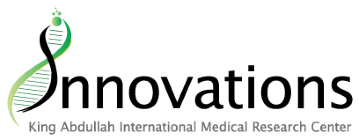
A simple screening tool can help doctors tailor the treatment of autistic children according to their individual needs.© JANINE WIEDEL PHOTOLIBRARY / ALAMY
A simple tool used by doctors to screen parents could lead to earlier identification and intervention for children with autism.Researchers from King Abdullah International Medical Research Center have found that the autism treatment evaluation checklist (ATEC) not only identifies which children have the condition, but also helps health professionals glean how they are most affected.
Their research could help give parents and carers the resources they need to help tailor treatment to the child’s needs, says KAIMRC clinical psychologist Sarah Al Shirian.Autism is a complex neuro-developmental disorder in which a child’s ability to communicate and interact with others is impaired. Children with autism often display restrictive or repetitive behaviours and interests. The condition ranges hugely in severity from mild to acute.
The ATEC is a simple, one-page test covering four key areas – known as “domains”: speech and language; sociability; sensory awareness and cognitive ability; and health and physical behaviour.
Each domain has a number of questions that help build a qualitative picture of the child’s experience. For example, can the child say three meaningful words in a sentence, or can they hold a meaningful conversation with peers or family?
In contrast, commonly used diagnostic tools, such as the Diagnostic and Statistical Manual of Mental Disorders, do not include a focus on physical or systemic issues and are more limited in the areas that are assessed.
The team used ATEC to assess 60 children between two and eight years of age who had been diagnosed with autism by specialists at the Prince Nasser Bin Abdulaziz Autism Center in Saudi Arabia.
The screening tool clearly identified a range of symptoms among the children, with more than half demonstrating hyperactivity and more than 90% unable to have a meaningful conversation.
It also found a range of other symptoms, with more than 60% getting “hooked” on words, or displaying what are known as “stemming” behaviours, such as head banging. Almost 60% were wetting the bed.
“The key finding in our study was that health, physical and communication dysfunctions were very common among the children that were studied,” Al Shirian says.
“This will have a huge impact on the quality of life of each autistic child, because both clinicians and other carers will know where to start with their medical management, education and improving social skills,” she says.
“We also believe that using the ATEC will help autism centers categorize students into groups, allowing them to focus on the domains that are affected in each group.” For example, some children might need extra help understanding social cues, while others may need help with movement and speech.
“When we know which domain is most affected in an autistic child, we can use this to assess the management, care and prognosis of each child individually,” says Shirian.
Al Shirian says this is particularly important in Saudi Arabia, where autism is becoming more common, but is not always treated optimally.


